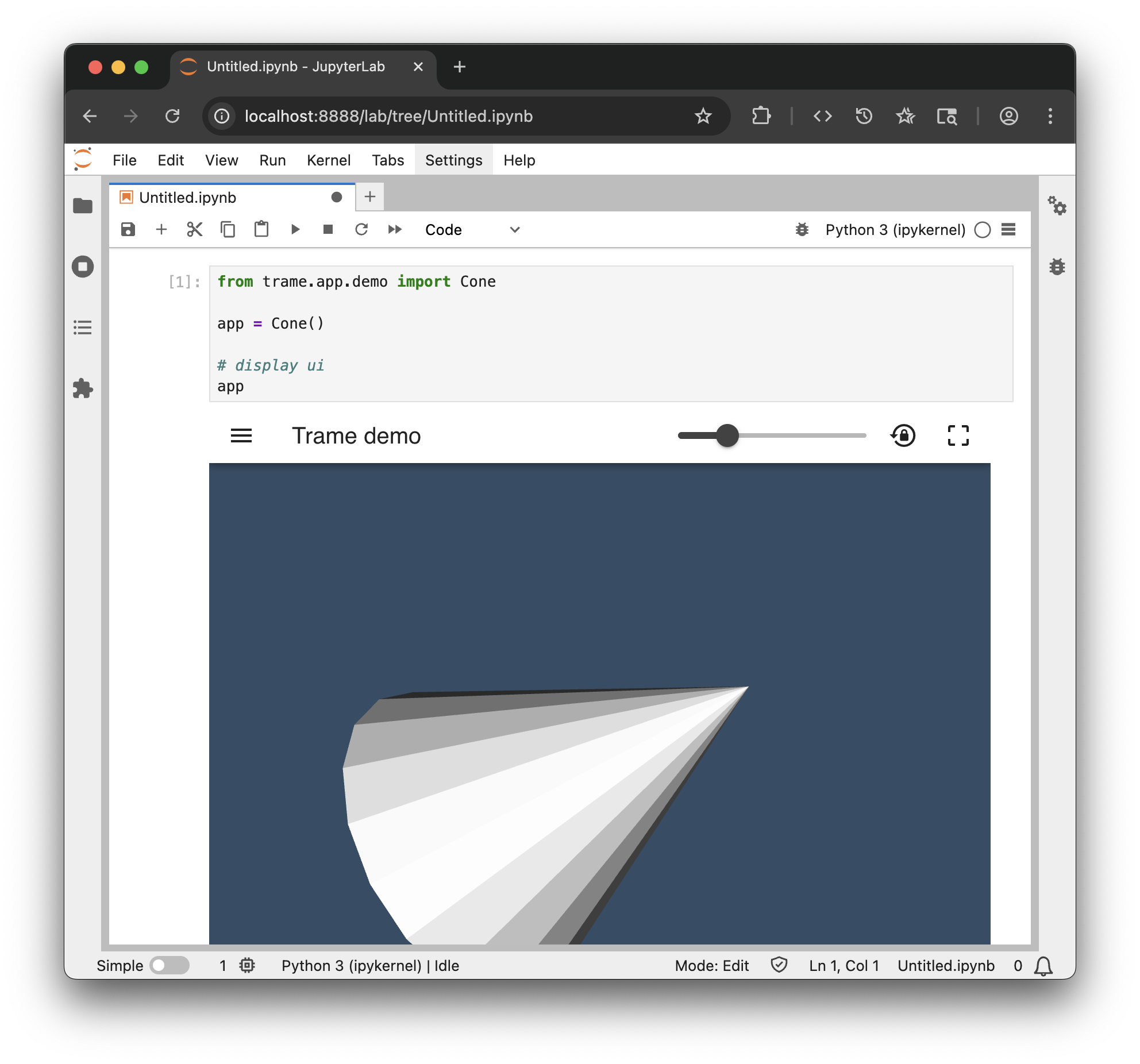Trame and Jupyter Lab
A trame application, while working in standalone fashion, can also be imported inside Jupyter and displayed within a notebook. To make that possible, the user will need to be able to import and instantiate such application in a Jupyter context. Then, the user will need to have access to the layout (ui) of that application so it can be displayed in the notebook flow.
Simple example
If you want to give it a try, you can setup a virtual environment like below:
bash
# Create virtual-environment
python3 -m venv .venv
# Activate environment
source .venv/bin/activate # => Linux / Mac
# .\.venv\Scripts\activate # => Window
# Install dependencies
pip install trame trame-vtk trame-vuetify # adding vuetify + vtk.js for demo app
pip install setuptools # used in trame-vuetify but not always available nowaday
pip install jupyterlabThen you can start Jupyter Lab and run the follow cells
bash
# start Jupyter
jupyter labThen within a new notebook, you can import our trame cone demo example (We'll look into the code later).
python
from trame.app.demo import Cone
# Create new application instance
app = Cone()
# Put the UI into the resulting cell
appThis should look like

If you want more examples using the same code, you can look at that binder example repository.
